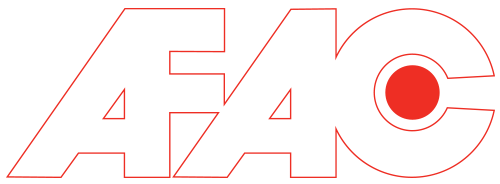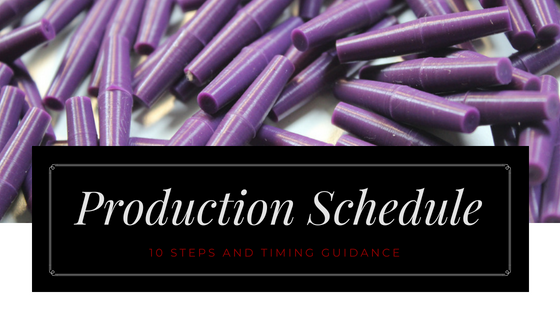
Masking plays a crucial role in metal finishing, especially for irregular-shaped parts. It involves covering specific areas of a part to prevent them from being exposed to the finishing process. Masking is important for two main reasons:
Protecting Specific Areas
During metal finishing, some areas of a part may need to be protected from the process. For example, threaded holes, mating surfaces, or bearing surfaces may need to be kept free of any coating or plating. Masking ensures these areas remain unaltered during the finishing process.
Ensuring Consistent Finishing
Masking also helps achieve a consistent and uniform finish on the surface of a part. By protecting specific areas, the finishing process can be applied evenly, resulting in a high-quality final product.
Types of Masking Techniques
There are several masking techniques available, each with its own set of advantages and disadvantages. The most common techniques include tape masking, and custom masking solutions.
Tape Masking
Tape masking involves using adhesive tapes to cover the areas of a part that need to be protected. These tapes are specifically designed for masking purposes and can withstand the chemicals and temperatures involved in metal finishing processes.
Advantages of Tape Masking
- Easy to apply and remove, making it suitable for small-scale production or prototypes.
- Provides a reliable seal when applied correctly.
Disadvantages of Tape Masking
- Can be challenging to apply on irregular or complex shapes.
- May not provide a tight seal on parts with sharp edges or tight corners.
Custom Masking Solutions
Custom masking solutions involve designing and manufacturing masks specifically for a particular part or application. These masks can be made from various materials, such as silicone, rubber, or metal, and are designed to fit the part precisely.
Advantages of Custom Masking Solutions
- Provides the best fit and seal for irregular-shaped parts.
- Can be more efficient for high-volume production.
Disadvantages of Custom Masking Solutions
- Higher initial cost due to the design and production of custom masks.
- Longer lead times for mask production.
Selecting the Right Masking Technique for Irregular-Shaped Parts
To choose the best masking technique for irregular-shaped parts, several factors need to be considered.
Masking irregular shaped parts: Factors to Consider
Shape and Size of the Part
Complex shapes, tight corners, and intricate features may require custom masking solutions for the best fit and protection. In contrast, simpler parts with fewer geometric complexities may be suitable for liquid or tape masking.
Metal Finishing Process
The specific metal finishing process being used can influence the choice of masking technique. For instance, some processes may require higher temperature resistance, necessitating the use of specialized masking materials.
Production Volume
The volume of parts being processed can also impact the choice of masking technique. For high-volume production, custom masking solutions may be more efficient and cost-effective in the long run. However, for low-volume production or prototyping, liquid or tape masking may be more appropriate.
Tips for Effective Masking of Irregular Shaped Parts
- Carefully assess the part’s geometry to determine the best masking technique.
- Test the masking materials to ensure they can withstand the chemicals and temperatures involved in the metal finishing process.
- Make sure the mask is applied and removed carefully to prevent damage to the part or the mask itself.
- Inspect the parts after the finishing process to ensure the masked areas are free of any residue or damage.
Conclusion
Masking is a crucial aspect of metal finishing, especially for irregular-shaped parts. By selecting the right masking technique and following best practices, manufacturers can achieve a consistent, high-quality finish on their products while protecting critical areas from the finishing process. The choice between liquid masking, tape masking, and custom masking solutions depends on factors such as part geometry, the specific finishing process, and production volume.
FAQs
- What is the purpose of masking in metal finishing? Masking protects specific areas of a part from being exposed to the finishing process, ensuring a consistent and uniform finish.
- What are the common masking techniques used in metal finishing? The most common masking techniques include liquid masking, tape masking, and custom masking solutions.
- How do I choose the best masking technique for my irregular-shaped parts? Consider factors such as part shape and size, the metal finishing process being used, and production volume to determine the best masking technique for your specific application.
- Are there any disadvantages to using custom masking solutions? Custom masking solutions can have higher initial costs due to the design and production of custom masks, as well as longer lead times for mask production. However, they often provide the best fit and protection for irregular-shaped parts.
- Can masking materials be reused? Some masking materials, such as custom masks made from silicone or metal, can be reused multiple times if they are properly cared for and not damaged during the finishing process. However, liquid masking and tape masking materials are typically single-use.
- How can I ensure that the masked areas are properly protected during the metal finishing process?To ensure the masked areas are well-protected, follow these steps: a. Choose the appropriate masking technique and material based on the part’s geometry and the specific finishing process. b. Properly clean and prepare the part’s surface before applying the mask. c. Apply the mask with care, ensuring a tight seal and full coverage of the areas to be protected. d. Inspect the masked parts before and after the finishing process to ensure that the masking material has remained intact and the protected areas are free from residue or damage.
- How does the choice of masking technique affect the overall cost of metal finishing?The choice of masking technique can impact the overall cost of metal finishing in several ways. While custom masking solutions may have higher initial costs due to design and production, they can offer long-term cost savings through increased efficiency and reduced rework for high-volume production. On the other hand, liquid and tape masking techniques may be more cost-effective for small-scale production or prototyping, but they can be time-consuming and less reliable for complex or irregular-shaped parts.
- What factors should be considered when choosing a masking material?When selecting a masking material, consider the following factors: a. Compatibility with the specific metal finishing process, including resistance to chemicals and temperatures involved. b. Ease of application and removal. c. Ability to conform to complex or irregular shapes. d. Reusability, if applicable.
- How can I ensure that the masking material does not damage the part during the metal finishing process?To prevent damage to the part during the metal finishing process, make sure to: a. Choose the appropriate masking material that is compatible with the specific finishing process. b. Properly clean and prepare the part’s surface before applying the mask. c. Apply the mask carefully, avoiding excessive pressure or stretching that could cause damage. d. Remove the mask gently after the finishing process, following the manufacturer’s guidelines for removal.
- Is it possible to automate the masking process for irregular-shaped parts?
Automating the masking process for irregular-shaped parts can be challenging due to the complex geometry of the parts. However, some advanced automation systems, such as robotic arms with machine vision, can be used to apply masks with high precision. The choice of masking technique and material, as well as the specific requirements of the metal finishing process, will influence the feasibility and cost-effectiveness of automation for masking irregular-shaped parts.








